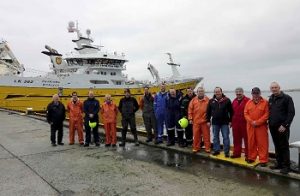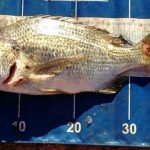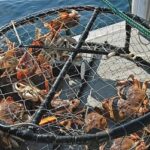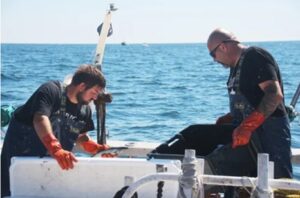Tag Archives: Southern Shrimping Alliance
Southern Shrimp Alliance Welcomes NOAA Fisheries’ Confirmation that U.S. Wild-Caught Shrimp Is the Sustainable Choice
 Last week, NOAA Fisheries published an on-line resource with facts regarding wild-caught American shrimp, explaining what makes it a sustainable seafood choice. Shrimp is, far and away, the most popular seafood in America. As NOAA Fisheries explains, “now about one-quarter of the seafood Americans eat is shrimp.” Yet, despite Americans’ love of shrimp, the U.S. shrimp industry is struggling. NOAA Fisheries notes that despite the fact that landings volumes were roughly the same in 2023 as they were in 2022, preliminary data from the Gulf of Mexico show that the industry sold $329 million of wild-caught shrimp in 2022 and that revenue dropped to $204 million in 2023 – a 38 percent drop.” more, >>CLICK TO READ<< 16:29
Last week, NOAA Fisheries published an on-line resource with facts regarding wild-caught American shrimp, explaining what makes it a sustainable seafood choice. Shrimp is, far and away, the most popular seafood in America. As NOAA Fisheries explains, “now about one-quarter of the seafood Americans eat is shrimp.” Yet, despite Americans’ love of shrimp, the U.S. shrimp industry is struggling. NOAA Fisheries notes that despite the fact that landings volumes were roughly the same in 2023 as they were in 2022, preliminary data from the Gulf of Mexico show that the industry sold $329 million of wild-caught shrimp in 2022 and that revenue dropped to $204 million in 2023 – a 38 percent drop.” more, >>CLICK TO READ<< 16:29
Big Fish Offshore Wind Producers Catch Attention Of Texas Fishermen
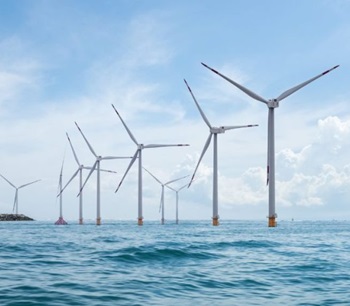 There is a fight on the open seas in Texas’ Gulf, not between sailors and pirates but between two of America’s most ambitious offshore wind producers. BlackRock-backed RWE Offshore US Gulf LLC recently asked the Bureau of Ocean Energy Management (BOEM) to pressure its competitor, Hecate Energy Gulf Wind LLC, to shell out big bucks to compensate Texas fishermen for potential damage to their fishing areas. “RWE urges BOEM to consider including an option for Hecate Energy –- and any future unsolicited proposals in the Gulf of Mexico — to commit funding for a Fisheries Compensatory Mitigation Fund,” the company recently said during a public comment period on a developing offshore wind project in south Texas. RWE also encouraged BOEM to require Hecate to develop a communication plan with fisheries and tribal governments. Texas’ fishing industry vigorously opposes RWE’s offshore wind projects, such as GOM WEA Option M near the TX-LA border. more, >>CLICK TO READ<< 16:14
There is a fight on the open seas in Texas’ Gulf, not between sailors and pirates but between two of America’s most ambitious offshore wind producers. BlackRock-backed RWE Offshore US Gulf LLC recently asked the Bureau of Ocean Energy Management (BOEM) to pressure its competitor, Hecate Energy Gulf Wind LLC, to shell out big bucks to compensate Texas fishermen for potential damage to their fishing areas. “RWE urges BOEM to consider including an option for Hecate Energy –- and any future unsolicited proposals in the Gulf of Mexico — to commit funding for a Fisheries Compensatory Mitigation Fund,” the company recently said during a public comment period on a developing offshore wind project in south Texas. RWE also encouraged BOEM to require Hecate to develop a communication plan with fisheries and tribal governments. Texas’ fishing industry vigorously opposes RWE’s offshore wind projects, such as GOM WEA Option M near the TX-LA border. more, >>CLICK TO READ<< 16:14
Save Our Shrimpers: Texas Fishermen In Danger
 Congressman Troy Nehls believes American money is being used to endanger America’s shrimping industry and he wants to put a stop to it through the Save Our Shrimpers (SOS) Act. “Our American companies are trying to compete with this shrimp coming in from Ecuador, and it’s just killing the prices,” Nehls (R-TX) noted. He said he heard from fishermen across his district and the entire Gulf region who told him they are no longer sending out shrimping trawlers because foreign competition has driven prices too low and inflation has driven expenses so high that it is no longer profitable. “Our American shrimpers are being squeezed to the point that they’re going to lose their businesses. And many of these businesses are second, third, fourth generation,” he added. more, >>CLICK TO READ<< 09:50
Congressman Troy Nehls believes American money is being used to endanger America’s shrimping industry and he wants to put a stop to it through the Save Our Shrimpers (SOS) Act. “Our American companies are trying to compete with this shrimp coming in from Ecuador, and it’s just killing the prices,” Nehls (R-TX) noted. He said he heard from fishermen across his district and the entire Gulf region who told him they are no longer sending out shrimping trawlers because foreign competition has driven prices too low and inflation has driven expenses so high that it is no longer profitable. “Our American shrimpers are being squeezed to the point that they’re going to lose their businesses. And many of these businesses are second, third, fourth generation,” he added. more, >>CLICK TO READ<< 09:50
Fishermen Taking Aim At Offshore Wind Projects Across Texas
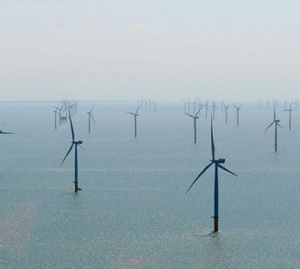 Fishermen are taking aim at offshore wind projects across Texas and the United States. On the same day that the Biden Administration pulled the plug on the second lease auction of a major proposed offshore wind project near the LA-TX border, the Bureau of Ocean Energy Management (BOEM) announced that it had been approached by “Hecate Energy Gulf Wind LLC (Hecate Energy) to acquire commercial wind energy lease(s) on the Outer Continental Shelf (OCS) in the Gulf of Mexico.” This potential project would transform thousands of aquatic acres into a wind farm. more, >>CLICK TO READ<< 17:04
Fishermen are taking aim at offshore wind projects across Texas and the United States. On the same day that the Biden Administration pulled the plug on the second lease auction of a major proposed offshore wind project near the LA-TX border, the Bureau of Ocean Energy Management (BOEM) announced that it had been approached by “Hecate Energy Gulf Wind LLC (Hecate Energy) to acquire commercial wind energy lease(s) on the Outer Continental Shelf (OCS) in the Gulf of Mexico.” This potential project would transform thousands of aquatic acres into a wind farm. more, >>CLICK TO READ<< 17:04
Is forced labor in Indian exports affecting Louisiana shrimpers? Congress investigates
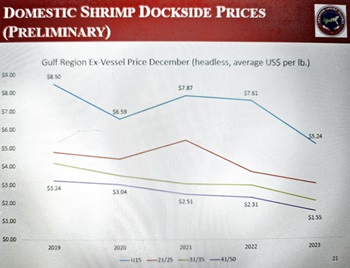 A congressional committee is investigating allegations of slave labor in the Indian shrimp industry. Such practices are among those blamed for rock-bottom shrimp prices negatively affecting Louisiana shrimpers. The House Committee on Natural Resources is investigating accusations of forced labor as well as importation of illegally obtained fish products. Additionally, the committee is looking at fraudulent reporting through the Seafood Import Monitoring Program, and the illegal use of antibiotics. The health of the American shrimp industry can often be measured by the number of landings each year. Those numbers have been on a mostly steady decline since 2001, with only five years above the downhill slope. more, >>CLICK TO READ<< 09:10
A congressional committee is investigating allegations of slave labor in the Indian shrimp industry. Such practices are among those blamed for rock-bottom shrimp prices negatively affecting Louisiana shrimpers. The House Committee on Natural Resources is investigating accusations of forced labor as well as importation of illegally obtained fish products. Additionally, the committee is looking at fraudulent reporting through the Seafood Import Monitoring Program, and the illegal use of antibiotics. The health of the American shrimp industry can often be measured by the number of landings each year. Those numbers have been on a mostly steady decline since 2001, with only five years above the downhill slope. more, >>CLICK TO READ<< 09:10


































